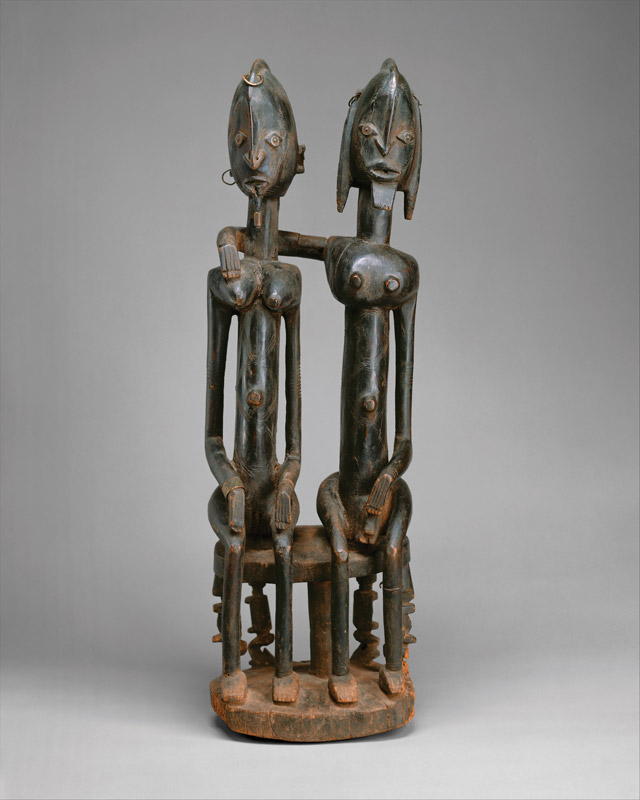Dogon Couple
History

Unkown artist, Mali. Seated Couple, 18th-early 19th century, wood, metal, 28 3/4 x 9 5/6 in. The Metropolitan Museum of Art, New York; Gift of Lester Wunderman 1997.394.15. (photo: www.metmuseum.org)
Dogon Couple refers to a group of 18th- or early 19th-century wooden sculptures of seated couples by an unknown Dogon artist. The figures’ gestures—the man’s arms encircling the woman’s shoulders—represent the symmetry and harmony in the male/female relationship in this West African culture. In replacing the original couple with two men, Wiley makes the relationship between the figures ambiguous. In many parts of the world, men holding hands or embracing is a simple gesture of friendship—while to Western eyes, such a gesture may suggest a more intimate relationship.

